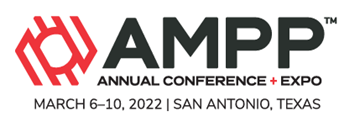Search
AMPP Conference Papers
View as
Sort by
Display
per page
Biofuel Tank Lining- From Lab to the Field Journey
Product Number:
51324-20722-SG
Publication Date:
2024
$40.00
Biofuels: Lining Systems for a Diverse Array of Sustainably Derived Feedstocks
Product Number:
51323-19061-SG
Publication Date:
2023
$20.00
Boiler And Fired Heater's Real-Time Creep Life Prediction
Product Number:
51323-19571-SG
Publication Date:
2023
$20.00
Brake Pads: Effect Of Galvanic Current On The Corrodibility Of Friction Materials And Backplates
Product Number:
51322-17926-SG
Publication Date:
2022
$20.00
Break Reduction/Life Extension for Municipal Water Pipelines
Product Number:
51324-20658-SG
Publication Date:
2024
$40.00
Building an Oil and Water Partitioning Model for Corrosion Inhibitor Dosage Based on Novel Residual Technique
Product Number:
51323-19205-SG
Publication Date:
2023
$20.00
Bulk Anode Advancements in Sacrificial Cathodic Protection Jackets
Product Number:
51323-19161-SG
Publication Date:
2023
$20.00
Burlington Skyway Electrochemical Chloride Extraction – 30 Years Later
Product Number:
51322-17664-SG
Publication Date:
2022
$20.00
Calcareous Deposition On Thermally Sprayed Aluminium Surfaces
Product Number:
51322-17798-SG
Publication Date:
2022
$20.00
Calcite Formation and Inhibition Under CO2 Corrosion Environment
Product Number:
51323-19227-SG
Publication Date:
2023
$20.00
Can Electrochemical Charging Replace Hydrogen Gas Charging During Hydrogen Embrittlement Testing?
Product Number:
51324-20712-SG
Publication Date:
2024
$40.00












